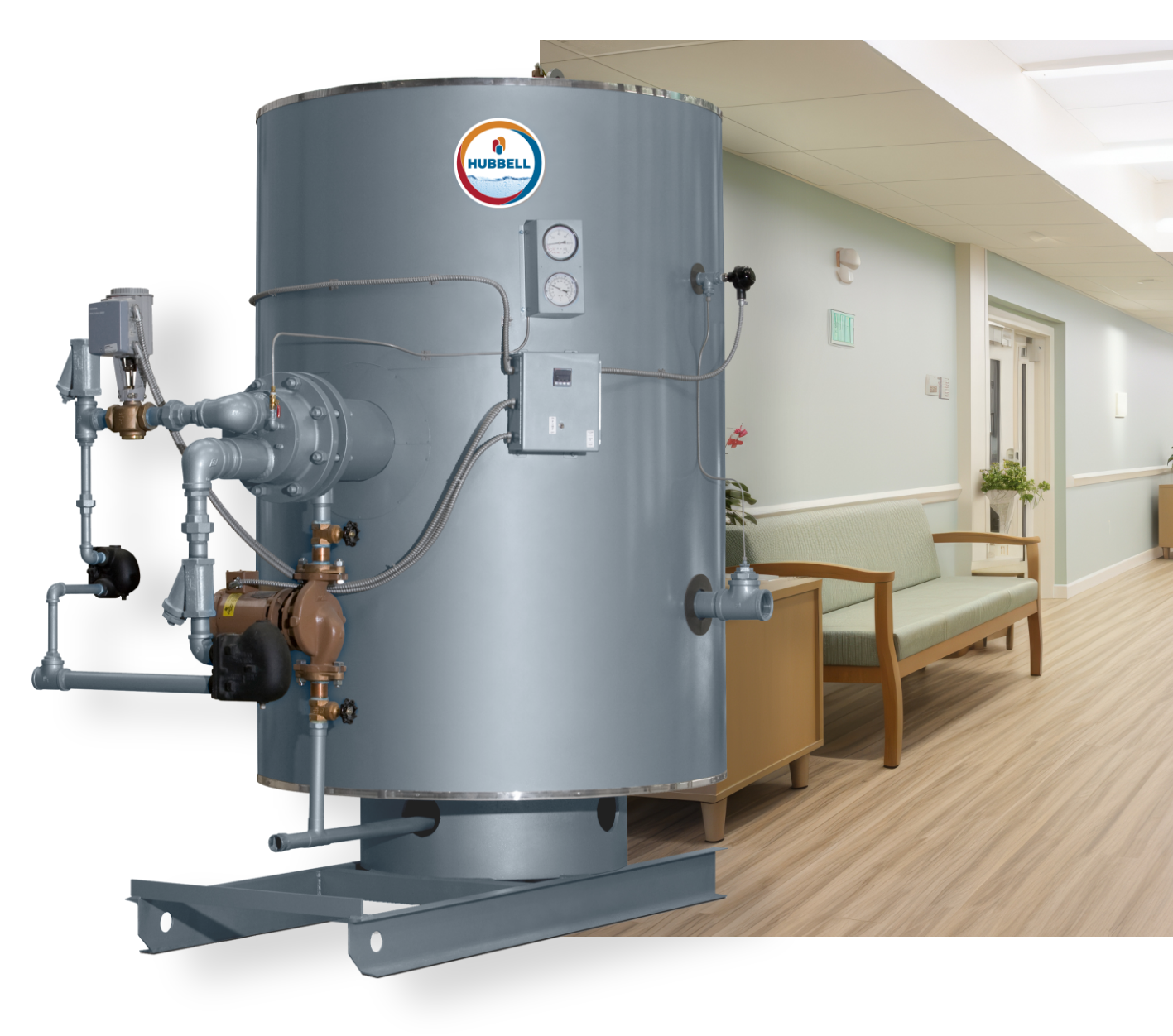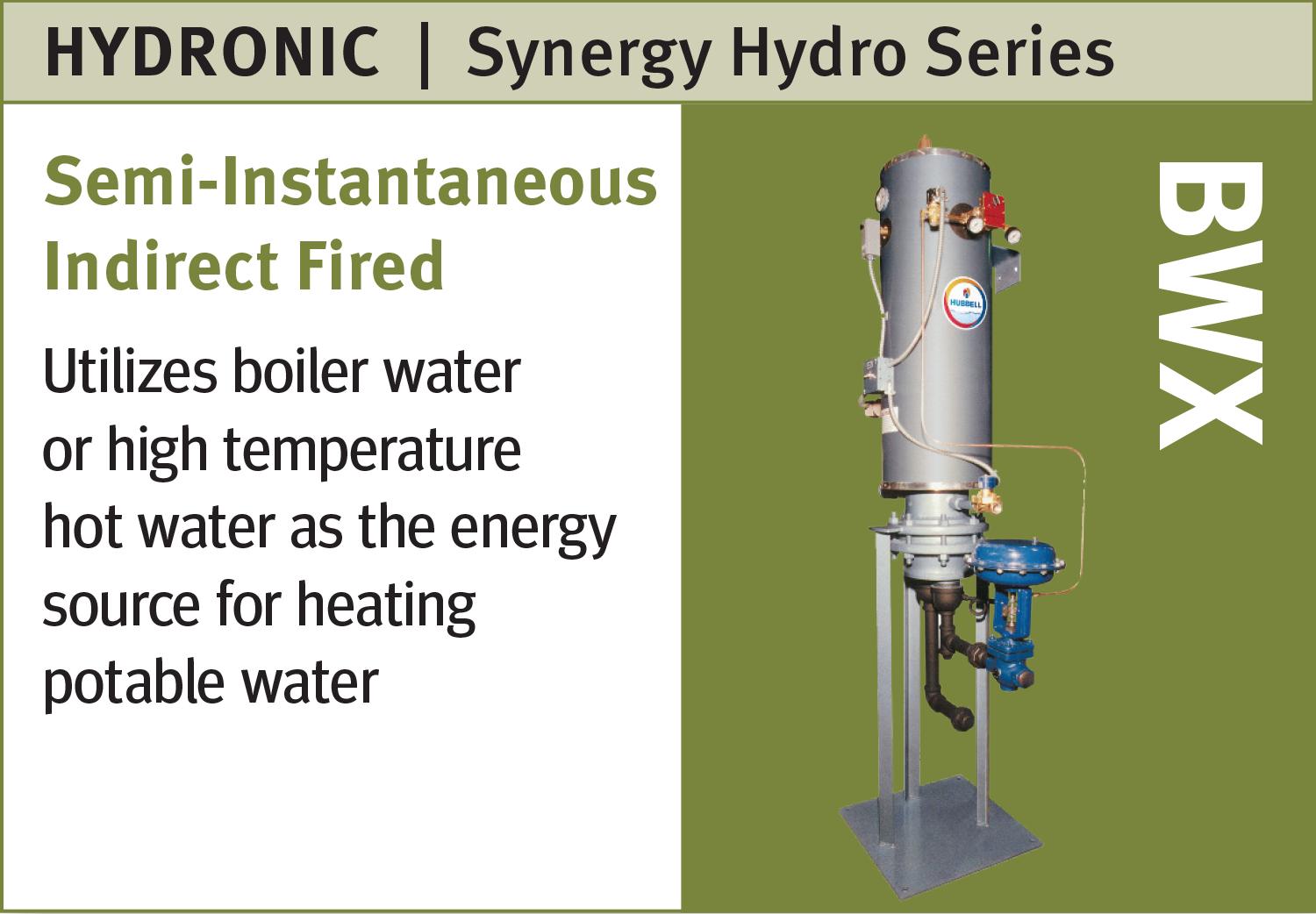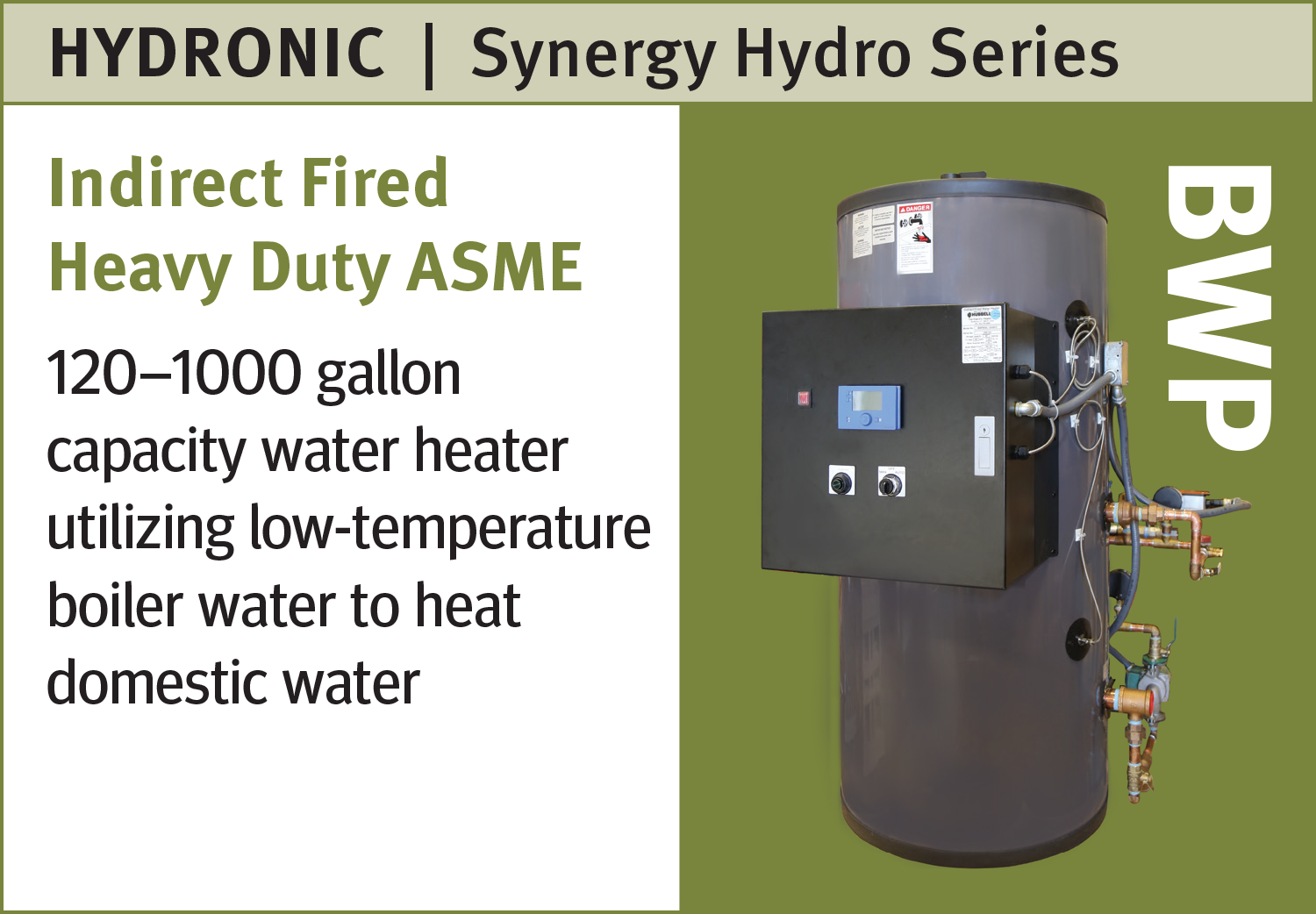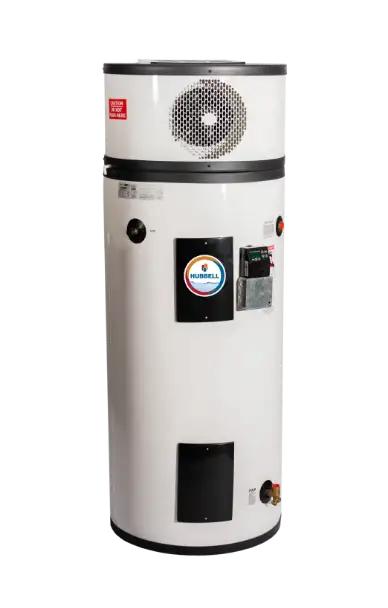Synergy Hydro Series
BW
ASME Packaged Indirect Fired Water Heater
Utilizes boiler water or high temperature hot water to heat domestic water, storage type system, 80-10,000 gallons

HYDRASTONE CEMENT LINING
HEAVY DUTY CONSTRUCTION
BOILER WATER CONTROL SYSTEM
STAINLESS STEEL TAPPINGS
FULLY PACKAGED SYSTEM
WIDELY CUSTOMIZABLE
Applications
Schools, office buildings, sports venues, hotels, industrial facilities, nursing homes, hospitals heat recovery systems, and much more.
Synergy Hydro Series
BW
ASME Packaged Indirect Fired Water Heater
Utilizes boiler water or high temperature hot water to heat domestic water, storage type system, 80-10,000 gallons
HYDRASTONE CEMENT LINING
HEAVY DUTY CONSTRUCTION
BOILER WATER CONTROL SYSTEM
STAINLESS STEEL TAPPINGS
FULLY PACKAGED SYSTEM
WIDELY CUSTOMIZABLE
Applications
Schools, office buildings, sports venues, hotels, industrial facilities, nursing homes, hospitals heat recovery systems, and much more.
BW Overview
Technical Documents
Request Info about the BW
You might also be interested in ...
Hubbell has a water heater for almost every application. Take a look at other options.









